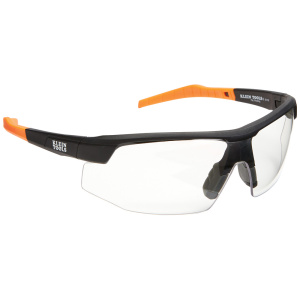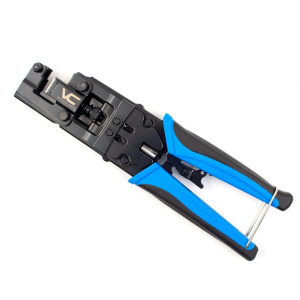Introduction
When it comes to reliable and efficient system operations, there’s more than meets the eye. As an essential part of infrastructure, cables need regular maintenance and prompt repair to deliver optimal performance. So, how can you ensure that your cables are in top-notch condition? Welcome to our guide on Mastering Cable Maintenance: Repair Techniques. This comprehensive guide explores industry-approved strategies for maintaining and repairing cables, ensuring your systems run smoothly.
Mastering Cable Maintenance: Repair Techniques
Effective cable maintenance and repair are more than just about fixing problems as they arise. It requires an understanding of cable construction, common cable issues, and effective preventive measures. Let’s delve into the world of cable maintenance and repair, helping you unlock the secrets to a well-oiled cable system.
Understanding Cable Construction: The Foundation of Maintenance
To truly master cable maintenance and repair, it’s crucial to grasp cable construction. Cables come in various types, including coaxial, Ethernet, and fibre optic, each with unique construction and maintenance needs.
Coaxial cables consist of four layers: the inner conductor, insulating layer, outer conductor, and insulating jacket. Ethernet cables, commonly used for networking, have eight wires twisted into four pairs. Fibre optic cables, on the other hand, transmit data as light pulses using an inner core surrounded by a cladding layer.
Understanding these structures provides a foundation for effective maintenance and repair techniques, ensuring that each cable type’s unique needs are met.
Preventive Maintenance: Nipping Problems in the Bud
As the old adage goes, “Prevention is better than cure.” This certainly holds in cable maintenance, where preventive measures can save you time, money, and potential system downtime. Regular visual inspections, timely replacements, and professional testing can all contribute to a well-maintained cable system.
Visual inspections can reveal potential problems such as fraying or kinking, allowing for early intervention. Timely replacement, particularly for ageing or heavily-used cables, can prevent system failure. Professional testing, including continuity and insulation-resistance tests, can help detect unseen issues that may lead to larger problems down the line.
Common Cable Problems and Their Solutions
Cables, like any other equipment, can encounter a range of issues. These could include physical damage, electrical interference, and connector issues, among others. Identifying these problems and knowing how to address them is an essential part of mastering cable maintenance and repair.
Physical damage, such as cuts or crushing, can impact a cable’s performance and lifespan. Repair techniques may include splicing for minor cuts or complete cable replacement in cases of severe damage.
Electrical interference, especially in poorly shielded cables, can disrupt signal transmission. Solutions may include using shielded cables, rerouting cables away from sources of interference, or even using fibre optic cables that are immune to electrical interference.
Connector issues, such as loose or corroded connections, can affect data transmission. Regular inspection and cleaning, coupled with prompt replacement of faulty connectors, can resolve such issues.
The Role of Proper Cable Installation in Maintenance
How cables are installed plays a significant role in their maintenance and potential need for repair. Overbending, incorrect connector installation, and improper cable routing can all contribute to cable damage. By ensuring correct installation, you can mitigate many potential issues and enhance the longevity and performance of your cables.
Proper bending radius, correct use of tools for connector installation, and adherence to cable routing guidelines can all contribute to proper cable installation. Training staff on these aspects can help prevent unnecessary cable damage and subsequent repair needs.
Investing in High-Quality Cables: A Stitch in Time
While it may be tempting to save costs by opting for cheaper cables, this can often lead to increased maintenance and repair needs. Investing in high-quality cables from reputable manufacturers can offer better performance, durability, and ultimately, cost-effectiveness.
High-quality cables often come with better shielding, robust construction, and superior materials, all contributing to their longevity. Additionally, these cables often come with manufacturer support, ensuring that any problems can be promptly and effectively addressed.
Effective Cable Repair Techniques
When preventive maintenance measures and quality cables fail, effective repair techniques come into play. Depending on the cable type and problem at hand, these techniques can range from splicing and crimping to connector replacement and cable replacement.
Splicing is a common repair technique for minor cuts or breaks in a cable. It involves joining two cable ends using a junction box or splice enclosure.
Crimping is used to repair or replace connectors, especially in Ethernet cables. It involves using a crimping tool to secure the connector onto the cable end.
In severe cases, where cable damage is extensive, cable replacement may be the only viable repair technique. While this can be more expensive and time-consuming, it ensures that system performance isn’t compromised.
Conclusion
Mastering cable maintenance and repair techniques doesn’t have to be a daunting task. With a solid understanding of cable construction, a proactive approach to maintenance, and the right repair techniques, you can ensure that your cable systems run optimally. Remember, investing in high-quality cables and proper installation can save you significant repair needs in the long run.
Frequently Asked Questions (FAQs)
Q: Why is cable maintenance important?
A: Regular cable maintenance helps detect potential issues early, preventing system downtime and saving costs in the long run. It ensures optimal cable performance and extends the cable’s lifespan.
Q: How often should I inspect my cables?
A: While there’s no hard and fast rule, a good practice is to visually inspect your cables at least every six months. However, for heavily-used or critical systems, more frequent inspections may be necessary.
Q: Can I repair a physically damaged cable?
A: Yes, minor physical damage, such as cuts or breaks, can often be repaired by splicing. However, for severe damage, cable replacement may be the only option.
Q: What is the impact of electrical interference on cables?
A: Electrical interference can disrupt signal transmission, leading to poor system performance. Shielded cables, proper cable routing, and the use of fibre optic cables can help mitigate this issue.
Q: Can I install cables myself?
A: While basic cable installation can be a DIY project, professional installation is recommended for complex systems. This ensures correct installation, preventing potential damage and future repair needs.
Q: Does the quality of cables impact maintenance and repair needs?
A: Absolutely! High-quality cables from reputable manufacturers are more durable and offer better performance, reducing the need for frequent maintenance and repair.












